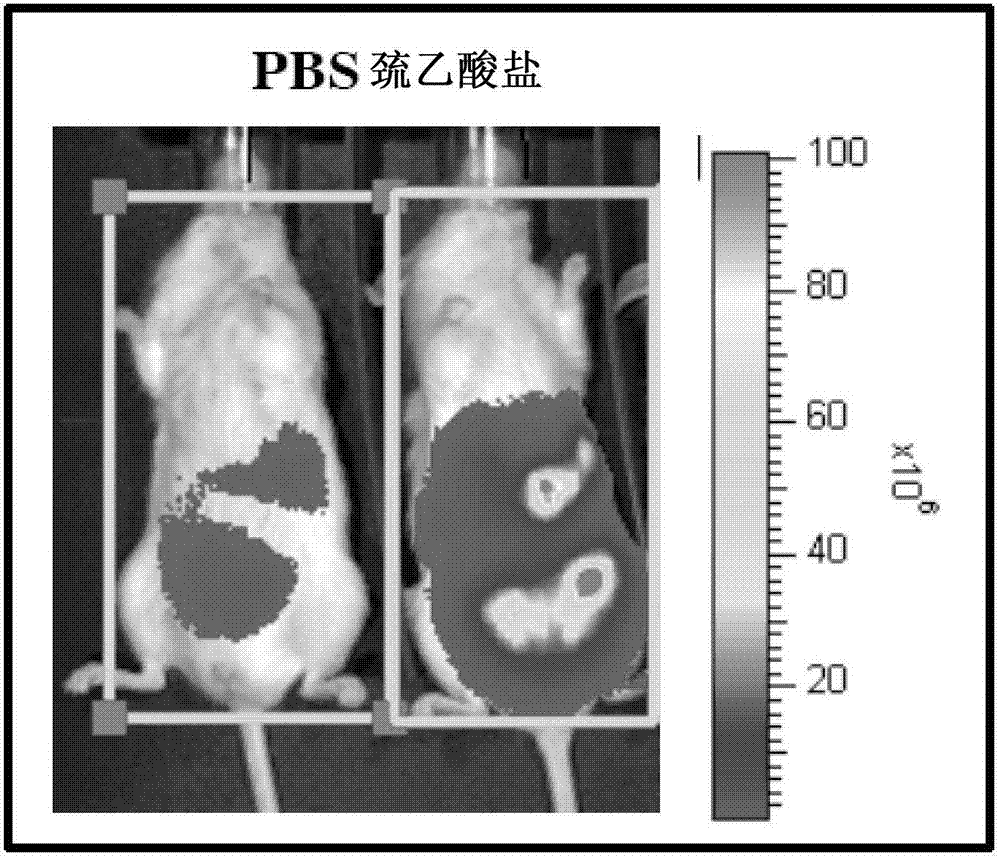Catenae: serosal cancer stem cells
A cancer stem cell, serosa technique, applied in tumor/cancer cells, animal cells, nervous system cells, etc., can solve the problem of cloned pure cells that have not been reported
- Summary
- Abstract
- Description
- Claims
- Application Information
AI Technical Summary
Problems solved by technology
Method used
Image
Examples
preparation example Construction
[0087] 5. Preparation of Free-Floating Chains and Spheroids
[0088] The present invention relates to methods for preparing free floating chains and spheroids. This article describes two main methods. In one approach, serosal epithelial or mesenchymal cancer cells are injected intraperitoneally (ip) into an animal tumor model (preferably a mouse), preferably under conditions in which an inflammatory stimulus is added. After sufficient time for the development of ascites and / or solid tumors, ascites fluid is harvested from ip tumor bearing animals and separated into two or more size fractions, preferably two fractions. Fractions of smaller size contain free floating chains and single cells, usually leukocytes. Leukocytes can be easily removed and the remaining cells serially passaged in suspension culture to obtain a self-renewing population of free-floating strands of clonal plasma membranes. Larger fractions include spheroids retained on the filter. These spheroids were c...
Embodiment 1
[0172] Example 1: Development of an in vivo orthotopic ovarian cancer model
[0173] The Ovcar3 cell line (obtained from NCI, NCI-60 group) was originally derived from the ascites fluid of a patient with advanced ovarian adenocarcinoma with peritoneal metastases [Hamilton, 1983]. Cell lines were maintained in M5-FCS medium.
[0174] Ovcar3 expressing luciferase and green fluorescent protein was obtained by transduction with a retroviral vector expressing an eGFP-HSV-TK-luciferase (GTL) fusion gene [Ponomarev, 2004]. Transduction efficiency was ~10%. Transduced Ovcar3 cells were sorted for highest GFP expression by FACS at the Flow Cytometry Core Facility (MSKCC). GFP-sorted Ovcar3 cells were called Ovcar3-GTL. Ovcar3-GTL cells were maintained in M5-FCS medium. On tissue culture treated plates Forms an epithelial monolayer.
[0175] Bioluminescent imaging was performed by anesthetizing mice with isoflurane (Baxter Healthcare) and administering D-luciferin (Xenogen) in PB...
Embodiment 2
[0181] Example 2: Inflammatory responses stimulate tumor growth
[0182] When NSG mice were i.p. implanted with Ovcar3-GTL cells and i.p. injected with PBS (every 3 days for 13 weeks), intraperitoneal tumor growth reached "equilibrium", as figure 1 shown. In NSG mice, tumor size was maintained at the same level for several months after equilibration. However, in the ovarian NSG model, peritoneal tumor growth was always more rapid and extensive, and compared with the PBS-injected group, in the injection with lipidated N3'→P5' phosphoramidate oligonucleotide ("oligonucleotide ”) in the group with larger volume of ascites ( figure 1 ). The oligonucleotide is a 13mer with the following structure and sequence: 5'-palmitoyl-TAGGTGTAAGCAA-3'.
[0183] BLAST searches of the oligonucleotide sequences found matches to several murine and human genes. Thus, the tumor-promoting effect of oligonucleotides in vivo may be due to some changes in gene expression in tumor cells or in cells ...
PUM
 Login to View More
Login to View More Abstract
Description
Claims
Application Information
 Login to View More
Login to View More - R&D Engineer
- R&D Manager
- IP Professional
- Industry Leading Data Capabilities
- Powerful AI technology
- Patent DNA Extraction
Browse by: Latest US Patents, China's latest patents, Technical Efficacy Thesaurus, Application Domain, Technology Topic, Popular Technical Reports.
© 2024 PatSnap. All rights reserved.Legal|Privacy policy|Modern Slavery Act Transparency Statement|Sitemap|About US| Contact US: help@patsnap.com










